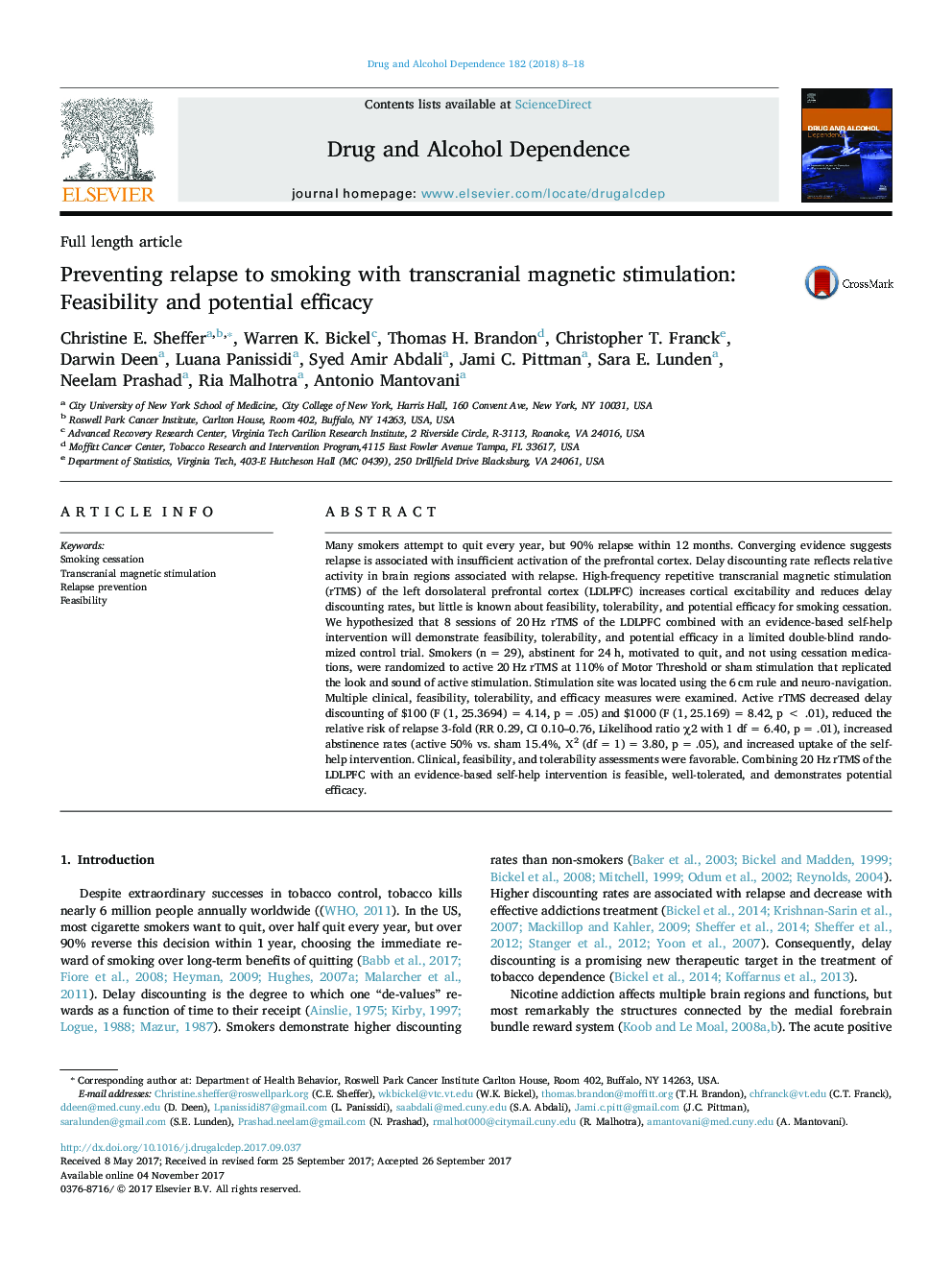| کد مقاله | کد نشریه | سال انتشار | مقاله انگلیسی | نسخه تمام متن |
|---|---|---|---|---|
| 7503400 | 1486109 | 2018 | 11 صفحه PDF | دانلود رایگان |
عنوان انگلیسی مقاله ISI
Preventing relapse to smoking with transcranial magnetic stimulation: Feasibility and potential efficacy
ترجمه فارسی عنوان
جلوگیری از عود سیگار کشیدن با تحریک مغناطیسی ترانس مغناطیسی: امکان پذیری و اثربخشی بالقوه
دانلود مقاله + سفارش ترجمه
دانلود مقاله ISI انگلیسی
رایگان برای ایرانیان
کلمات کلیدی
ترک سیگار، تحریک مغناطیسی ترانس مغناطیسی، پیشگیری از عود، امکان پذیری،
موضوعات مرتبط
علوم زیستی و بیوفناوری
علم عصب شناسی
علوم اعصاب رفتاری
چکیده انگلیسی
Many smokers attempt to quit every year, but 90% relapse within 12 months. Converging evidence suggests relapse is associated with insufficient activation of the prefrontal cortex. Delay discounting rate reflects relative activity in brain regions associated with relapse. High-frequency repetitive transcranial magnetic stimulation (rTMS) of the left dorsolateral prefrontal cortex (LDLPFC) increases cortical excitability and reduces delay discounting rates, but little is known about feasibility, tolerability, and potential efficacy for smoking cessation. We hypothesized that 8 sessions of 20 Hz rTMS of the LDLPFC combined with an evidence-based self-help intervention will demonstrate feasibility, tolerability, and potential efficacy in a limited double-blind randomized control trial. Smokers (n = 29), abstinent for 24 h, motivated to quit, and not using cessation medications, were randomized to active 20 Hz rTMS at 110% of Motor Threshold or sham stimulation that replicated the look and sound of active stimulation. Stimulation site was located using the 6 cm rule and neuro-navigation. Multiple clinical, feasibility, tolerability, and efficacy measures were examined. Active rTMS decreased delay discounting of $100 (F (1, 25.3694) = 4.14, p = .05) and $1000 (F (1, 25.169) = 8.42, p < .01), reduced the relative risk of relapse 3-fold (RR 0.29, CI 0.10-0.76, Likelihood ratio Ï2 with 1 df = 6.40, p = .01), increased abstinence rates (active 50% vs. sham 15.4%, Χ2 (df = 1) = 3.80, p = .05), and increased uptake of the self-help intervention. Clinical, feasibility, and tolerability assessments were favorable. Combining 20 Hz rTMS of the LDLPFC with an evidence-based self-help intervention is feasible, well-tolerated, and demonstrates potential efficacy.
ناشر
Database: Elsevier - ScienceDirect (ساینس دایرکت)
Journal: Drug and Alcohol Dependence - Volume 182, 1 January 2018, Pages 8-18
Journal: Drug and Alcohol Dependence - Volume 182, 1 January 2018, Pages 8-18
نویسندگان
Christine E. Sheffer, Warren K. Bickel, Thomas H. Brandon, Christopher T. Franck, Darwin Deen, Luana Panissidi, Syed Amir Abdali, Jami C. Pittman, Sara E. Lunden, Neelam Prashad, Ria Malhotra, Antonio Mantovani,
